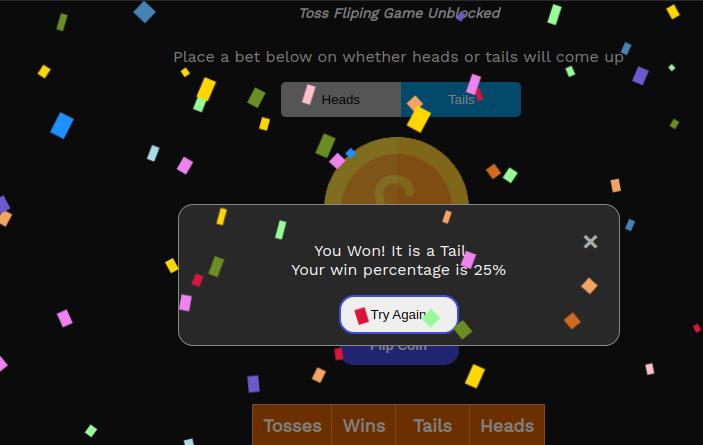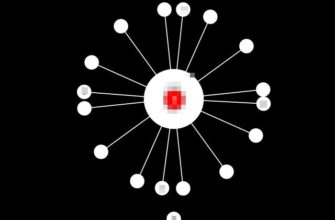The game of Flip a Coin, also known simply as a coin toss, is a timeless and straightforward method of making decisions, settling disputes and determining outcomes in various situations. This game relies on the probabilistic nature of a coin toss, where each side of the coin (heads or tails) has an equal chance of landing on top.
Despite its simplicity, Flip a Coin game holds a significant place in decision-making processes across cultures and contexts.
Historical Background
The origins of coin tossing can be traced back to ancient civilizations. The practice was widespread in Roman times, where it was known as “navia aut caput” (ship or head), referring to the common depiction of a ship on one side of the coin and the head of a prominent figure on the other. Throughout history, this game has evolved, but its basic purpose of providing an impartial method of decision making has remained.
How to Play?
Playing the Flip a Coin game is remarkably simple. Here are the basic steps:
- Get yourself a coin: Any coin with two different sides is suitable. Usually one side is called “heads” (usually with a prominent figure) and the other is called “tails” (often with a different design or symbol).
- Assign the results: Decide what the two sides of the coin should mean. For example, in a decision scenario, heads could mean that you should go ahead with a plan, while tails could mean that you should reconsider.
- Flip the coin: Hold the coin between your thumb and forefinger, flick it in the air and let it land. The side that is facing up when the coin lands determines the result.
- Announce the result: Depending on which side is face up, the predetermined result is announced.
Applications of the Game
Flip a Coin game is used in a variety of contexts, including:
- Decision Making: When faced with a tough choice, flipping a coin can provide a quick and impartial resolution.
- Sports: Many sports use coin flips to determine which team will start with possession or choose their side of the field.
- Dispute Resolution: In situations where two parties cannot agree, a coin flip offers a fair method to decide.
- Games and Activities: Some games and activities incorporate coin flipping as a means to introduce chance and unpredictability.
Probability and Fairness
A central aspect of the Flip a Coin game is the calculation of probability. Theoretically, a fair coin has a 50% chance of coming up heads and a 50% chance of coming up tails. This equal probability ensures fairness and impartiality in the decision-making process. However, factors such as the technique of the coin toss and the surface on which the coin lands can lead to slight biases, but these are usually negligible in casual situations.
In the digital age, the physical coin toss has undergone modern adaptations. Numerous apps and online tools simulate tossing coins and offer a virtual way to achieve the same results. These digital versions often incorporate random number generators to ensure fairness and can be particularly useful when a physical coin is not available.
FAQ Flip a Coin Game
- How does the Flip a Coin game ensure fairness in decision-making?Flip a Coin game ensures fairness through its reliance on probability. A standard coin has two sides—heads and tails—each with an equal 50% chance of landing face up. This inherent equal likelihood eliminates bias, providing an impartial outcome for decision-making. Any minor variations in flipping technique or landing surface generally have a negligible impact on fairness, especially in casual settings.
- In what contexts is the Flip a Coin game commonly used?Flip a Coin game is versatile and used in various contexts, including:
- Decision Making: To quickly resolve dilemmas or make choices when options are equally preferable.
- Sports: To determine starting positions or possessions, such as the initial kickoff in football (soccer) or the first serve in tennis.
- Dispute Resolution: To settle arguments or disagreements in a fair manner.
- Games and Activities: As a fun element to introduce randomness and chance in board games, party games, or other recreational activities.
- Can a coin toss be influenced or biased in any way?While a coin toss is designed to be fair, certain factors can introduce slight biases. These factors include the flipping technique, the weight distribution of the coin, the surface on which the coin lands, and even environmental conditions like wind. However, in most casual situations, these influences are minimal and do not significantly affect the fairness of the outcome. For important decisions, ensuring a standard and consistent flipping method can help maintain impartiality.
- Are there digital alternatives to physical coin flipping, and are they reliable?Yes, there are numerous digital alternatives to physical coin flipping, including mobile apps and online tools. These digital versions use random number generators to simulate the randomness of a coin toss. They are generally reliable and can be especially useful when a physical coin is not available. The key to their reliability lies in the quality of the random number generator used. Reputable apps and websites ensure that the digital coin flip remains fair and unbiased.
These questions and answers provide a comprehensive overview of the Flip a Coin game, highlighting its simplicity, fairness, and various applications in decision-making and entertainment.
Flip a coin: Heads or tails?
The game of flip a coin remains a popular and proven method of making decisions and resolving disputes. Its simplicity, fairness and ease of use contribute to its popularity in different cultures and contexts. Whether for serious decisions or fun games, flipping a coin is still a popular method of achieving impartial results.
So the next time you need to make a quick decision, pick up a coin and let fate take its course with a simple toss.








